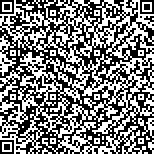| 摘要: |
| 为了解韭山列岛海洋生态自然保护区(下简称保护区)生物资源分布、群落结构特征及受干扰情况,于2012年4月(春)、7月(夏)对保护区及其附近海域进行了底拖网生物资源调查。运用物种多样性指数、丰度生物量比较曲线(abundance-biomass comparison curves,ABC)、相似性聚类(Bray-Curtis)及非度量多维尺度分析(non-metric multi-dimensional scaling,NMDS)等方法,比较分析了春、夏季保护区及其附近海域底拖网生物资源的物种多样性、群落结构及稳定性。结果显示:(1)调查海域共出现海洋生物45属47种,隶属7门11纲22目36科,其中保护区42种,保护区附近海域37种,节肢动物丰度和生物量最高;(2)日本鼓虾(Alpheus japonicas)为保护区及其附近海域特征种,保护区季节间物种更替率(64.29%)低于其附近海域(72.97%);(3)保护区平均丰度为37.459ind/Agt,平均生物量为59.160g/Agt,其附近海域平均丰度为37.048ind/Agt,平均生物量为37.230g/Agt,保护区丰度和生物量高于其附近海域;(4)春季保护区与其附近海域Shannon-Weiner多样性指数、Margalef物种丰富度指数、Pielou均匀度指数相近且均较低,夏季保护区多样性指数高于其附近海域;(5)ABC曲线表明,春季保护区及其附近海域处于轻微干扰及未受到干扰状态,夏季保护区处于轻微干扰状态,其附近海域处于重度干扰状态。综上所述,韭山列岛海洋生态自然保护区的设立,在提高物种多样性、物种丰度、生物量及维持群落结构的稳定性方面优于其附近海域。 |
| 关键词: 韭山列岛海洋生态自然保护区 分布特征 群落结构 底拖网 |
| DOI:10.11693/hyhz20191000195 |
| 分类号:S932;Q958 |
| 基金项目:国家自然科学基金项目,31671097号;公益性行业(农业)科研专项,201303047号。 |
|
| DISTRIBUTION AND COMMUNITY STRUCTURE OF TRAWLING MARINE ORGANISMS IN JIUSHAN ISLANDS MARINE ECOLOGICAL NATURE RESERVE AND ADJACENCY |
|
LI Jin-Jing1, LIU Ying1, LI Xiang-Fu2, LIU Hao-Zhen1, XU Peng1, SUN Yuan1,3, JIAO Hai-Feng1,3, WANG Yi-Nong1, YOU Zhong-Jie1
|
|
1.School of Marine Science, Ningbo University, Ningbo 315832, China;2.Oceanography South China Sea Institute of Oceanology Chinese Academy of Sciences, Guangzhou 510301, China;3.Zhejiang Ningbo Academy of Oceanology and Fishery, Ningbo 315103, China
|
| Abstract: |
| To determine the distribution, community structure, and disturbance of biological resources in the Jiushan Islands Marine Ecological Nature Reserve (the reserve hereinafter) and the adjacency, bottom trawling biological resources were investigated in April (spring) and July (summer) in 2012. Species diversity index, abundance-biomass comparison curves (ABC curves), Bray-Curtis similarity clustering and non-metric multi-dimensional scaling analysis (NMDS) were used to analyze the structure, diversity, and distribution of the spring and summer communities. The results show that:(1) there were 47 species of marine organisms belonging to 45 genera, 22 orders, and 36 families, of which 42 species were in the reserve and 37 species in the adjacency. The marine organisms were mainly consisted of Arthropoda, Mollusca, and Chordata, of which Arthropoda had the highest abundance and biomass. (2) Alpheus japonicas was a common character-species, and species replacement rate (64.29%) in the reserve was lower than that of the nearby sea area (72.97%). (3) The average abundance was 37.459ind/Agt in the reserve and 37.048ind/Agt in the adjacency. The average biomass was 59.160g/Agt in the reserve and 37.230g/Agt in the adjacency. The average abundance and biomass in the reserve were higher than those in the adjacency. (4) The Shannon-Weiner diversity index, Margalef species richness index, and Pielou evenness index reflected similar results, and lower in spring and higher in summer. (5) The ABC curve shows that, in spring, the reserve was slightly disturbed and the adjacency was undisturbed, while in summer, the reserve was slightly disturbed and the adjacency was severely disturbed. Therefore, the ecological status of the reserve was better than that of the adjacency for having richer species diversity, and greater species abundance and biomass, and the community structure has been maintained and stabilized. |
| Key words: The Jiushan Islands Marine Ecological Nature Reserve distribution characteristics community structure bottom trawling |
